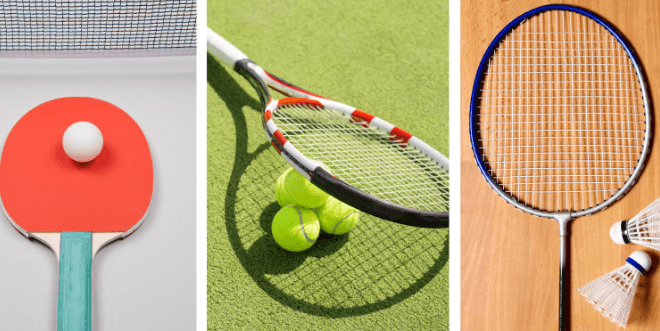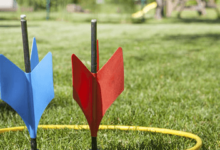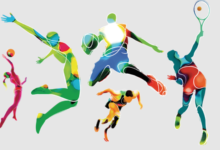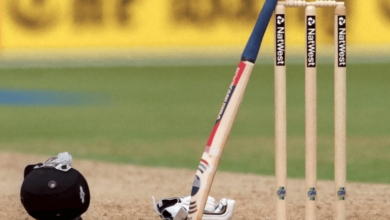Transitioning from Other Racket Sports to Pickleball: Tips for Adaptation

Introduction
Pickleball has quickly captured the attention of athletes switching from a variety of racquet sports because of its captivating and quick-paced gameplay. If you play table tennis, badminton, or tennis, you should be able to adjust to the dynamics of Pickleball with a strategic mindset and a thorough knowledge of its unique rules, equipment, and methods.
Understanding Racket Sports
Gaining an understanding of the basic components of other racket sports enhances players’ ability to better understand the subtleties of Pickleball. Every racket sport has its own set of strategies, rules, and playing philosophies that add to the distinctive sensations they provide. Tennis stresses stamina and accurate shot placement with its strong serves and baseline rallies. Badminton requires dexterity and grace because of its swift reflexes and exquisite net play. Table tennis players develop their dexterity and hand-eye coordination through its fast exchanges and smart spin control. Players may easily move into the dynamic world of Pickleball, where aspects from all of these sports come together to create an exciting and engaging gameplay experience, by learning more about the subtleties of these sports.
Exploring Pickleball Dynamics
Learn about the nuances of Pickleball, such as the size of the court, the speed at which it is played, and the technical features that set it apart from other racquet sports. Pickleball’s small court size promotes speedy gameplay and demands players to adjust to the sudden changes between attack and defense. Distinct from the conventional usage of strings and shuttlecocks in tennis and badminton, the sport’s use of solid paddles and perforated plastic balls modifies the mechanics of ball control, spin, and shot placement. Comprehending these unique components is essential for players hoping to move smoothly and succeed in the Pickleball environment.
Key Adaptation Techniques
Gaining proficiency in Pickleball requires learning particular skills that make the switch from other racket sports easier. Tennis players switching to Pickleball may need to modify their swing technique to account for the smaller court and varied ball contact spots. In a similar vein, players transitioning from badminton may concentrate on honing their net play and volleys while considering the different paddle and ball characteristics. Comprehending the distinct footwork patterns and shot tactics exclusive to Pickleball can greatly accelerate the adaptation process, allowing players to transfer their current skill set into the new sport with ease.
Adjusting to Pickleball Court
Players switching from other racquet sports must grasp the specifications and layout of a Pickleball court. Because Pickleball courts are usually smaller than tennis courts, players must adjust their placement, gait, and shot choice. Effective inclusion into the sport necessitates modifying playing methods to account for the smaller court and the distinct placement of the kitchen or non-volley zone. For players switching from other racquet sports, understanding how the size of the court affects shot placement and court coverage can make a big difference in how smoothly they adjust.
Adapting to Different Gameplay Pace
When players switch from the varied tempos of other racket sports to pickleball’s relatively rapid gameplay, they must adapt their reflexes, shot placement, and anticipation. Pickleball requires players to make decisions quickly and move quickly in order to keep up with the fast-paced, dynamic character of the game, in contrast to several racket sports that have slower rallies. Gaining an understanding of the subtleties of the fast-paced nature of the game and developing quick reflexes are essential skills for adjusting to pickleball’s high-stress atmosphere.
Mastering Pickleball Techniques
Improving one’s Pickleball skills requires developing a variety of specialized methods that are specific to the game. Players can improve their overall performance and strategic ability on the court by honing their dink shot, serving techniques, and understanding the nuances of the third-shot drop. By allowing players to take charge of rallies, construct cunning openers, and hold an advantage throughout games, these strategies all add to a well-rounded gameplay style. Through consistent practice and comprehension of these fundamental movements, players can improve their performance and adjust to the pickleball’s unique dynamics more easily.
Overcoming Challenges
There are a lot of difficulties and potential roadblocks to overcome while switching from other racket sports to Pickleball. Players may run into obstacles that call for patience, perseverance, and a willingness to accept the learning curve, whether it is adjusting to the intricate gameplay tactics, honing one’s techniques, or adapting to the faster tempo of Pickleball. Players may facilitate a more seamless and fulfilling integration into the Pickleball community by recognizing and tackling these obstacles early on in the transfer process.
Coping with Altered Strategies
Creating strategies that are adapted to the particular gameplay and shot requirements of Pickleball is a crucial part of making the switch. Players must reevaluate their strategy as they become accustomed to the subtleties of Pickleball, taking into account the nuances of court positioning, shot selection, and successful gameplay strategies. In the fast-paced world of Pickleball, players can improve their competitive edge and maximize their performance by perfecting these modified methods.
Read also 150 funny trivia questions for kids
Addressing Rule Confusions
When players switch from other racquet sports to Pickleball, they frequently run into possible rule misunderstandings. For people who are used to different sports contexts, pickleball’s unique rules, scoring methods, and subtleties can be difficult at first to comprehend. Players may facilitate a smoother transition and seamless incorporation into the Pickleball community by providing clarification on any disparities in the rules and encouraging a thorough understanding of the game’s specific regulations.
Engaging in Tournaments
Pickleball players can improve their abilities, put them to the test, and promote a competitive spirit within the sport by participating in tournaments and competitions. Taking advantage of the friendships and sportsmanship that these gatherings offer can help make the switch from other racket sports to the exciting world of Pickleball even more enjoyable.
Conclusion
Making the switch from other racket sports to Pickleball requires commitment, regular practice, and a thorough comprehension of the particular dynamics of the game. Accepting the opportunities and difficulties that Pickleball offers not only improves one’s physical skills but also creates a rewarding and joyful experience in the vibrant world of this emerging sport.
FAQs
What are the fundamental differences between Pickleball and other racket sports?
Pickleball’s distinct court dimensions, specially designed paddles, and particular serving regulations set it apart from other racket sports. Pickleball has a smaller court than tennis, badminton, or table tennis, which has a big impact on the game’s dynamics.
How can players effectively adapt their playing styles to suit the dynamics of Pickleball?
Pickleball requires a concentration on learning specific skills, including as the dink shot, third-shot drop, and appropriate paddle grip, in order to adjust. Furthermore, Pickleball players need to acquaint themselves with the quicker tempo and closer net proximity of the game.
Are there any specific Pickleball training programs available for players transitioning from other sports?
Players switching from one racket sport to another can benefit from a number of Pickleball training regimens. To help players transition smoothly, these programs often provide specific teaching sessions that concentrate on important Pickleball strategies, skills, and court positioning.
What are the common misconceptions players have when transitioning to Pickleball, and how can they be addressed?
A prevalent misperception is that pickleball’s gameplay and tactics are quite similar to those of other racquet sports. Players need to actively participate in practice sessions and neighborhood club events to better understand the sport, as well as complete education and instruction that emphasizes pickleball’s special dynamics.
How can players find local Pickleball communities and clubs to engage with during the transition process?
You can use social media groups, community sports centers, or internet platforms to find local Pickleball communities and clubs. During the transition period, Pickleball players can also benefit from networking opportunities and a sense of community participation by participating in local Pickleball events, tournaments, or open play sessions.







